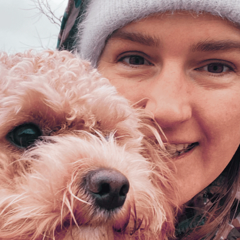
By Hilary Cluett
Picture this: A startup slashes its development costs by 90% and beats competitors to market by over a year. Does this sound like a startup fairy tale? It’s not. It’s the power of cross-collaborative design.
Most businesses treat design like an afterthought, creating:
Kerry Chartrand, Founder of Wentoo (a 2024 startup), said, “We would have been burning money if we didn’t understand the value of integrated design to score our beachhead client.”
Let’s dive into Kerry’s real-world transformation, comparing the traditional startup and our cross-collaborative approaches.
Traditional Startup Approach:
Our Cross-Collaborative Approach:
When it takes less time to get to market and less money to develop a prototype, you can quickly get your first paying client and make pivotal decisions about your future instead of relying on future projections that may be completely inaccurate.
For Kerry’s project, getting to market quickly was necessary to capture customers before her competition. By focusing on getting her first paying client, she could pay to optimize, scale and grow through revenue instead of initial capital.
Step 1: Direct Cost Analysis
Step 2: Revenue Acceleration
Early Market Entry Value was a competitive positioning that is 17 months faster with immediate revenue generation and customer mindshare capture.
Step 3: Holistic Value Creation
For Kerry’s initial project, two experts with diverse backgrounds created her prototype by leveraging existing AI tools and services to achieve the goal of scoring her beachhead client.
Within the first year of operation, Kerry has expanded her team and optimized her services. In contrast, a competitor might still be waiting for their initial concept.
Team dynamics will change depending on the project and goal. Suppose your internal goal is to
reduce manufacturing costs and your external goal is to resonate emotionally with your clients.
Your team might include an industrial designer, a UX and service designer, and a brand
strategist.
Industrial Designers:
UX Designers:
Service Designers:
Brand Strategists:
If you’re not measuring it, then it doesn’t count.
Five critical metrics to track and measure your cross-collaborative design success:
A few implementation hurdles you might experience are initial cultural resistance because someone is comfortable in their silo. Or a challenge with communication alignment or skill integration.
You can overcome these challenges with the following three mitigation strategies:
Cross-collaborative design isn’t just a strategy – it’s a competitive superpower. By breaking down silos and leveraging collective expertise, you’re not just reducing costs. You’re fundamentally reimagining how innovation happens.
Ready to transform your approach? Our next article will provide a step-by-step implementation guide to assembling your dream cross-collaborative design team.
Bonus: Check out our free “Checklist for Establishing Effective Cross-Functional Processes with
Collaborative Workflows” at https://www.uxvocabclub.com/hire-trustworthy-tech-talent/demos/checklists/achieve-marketing-goals-with-seamless-user-experience-collaboration#collaborative-workflows
About Hilary Cluett:
Hilary Cluett operates a Service Design Agency and knows the right designer to call from her UX Vocab Club of over 7,000 cross-disciplinary specialists. For 20 years, she has been in the customer experience business and loves a good journey map. She has adventures with her service poodle, Akira, and bakes delicious pastries.